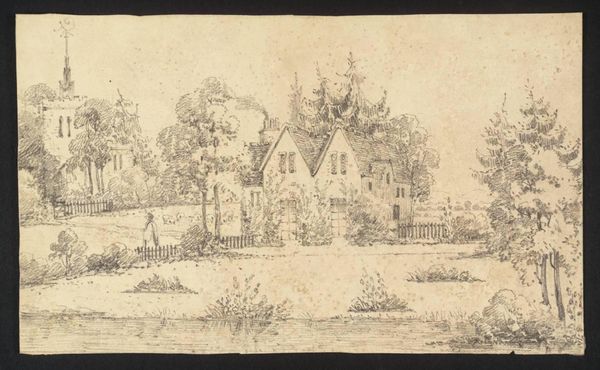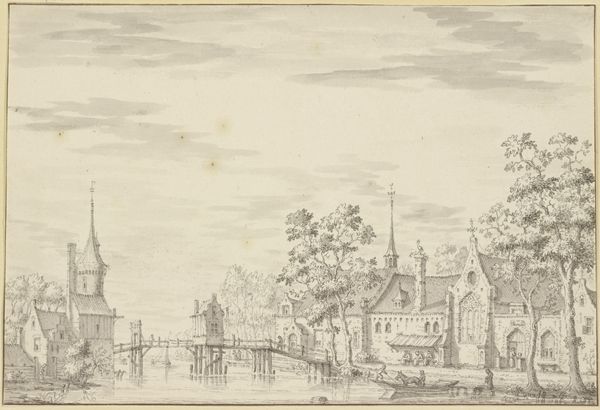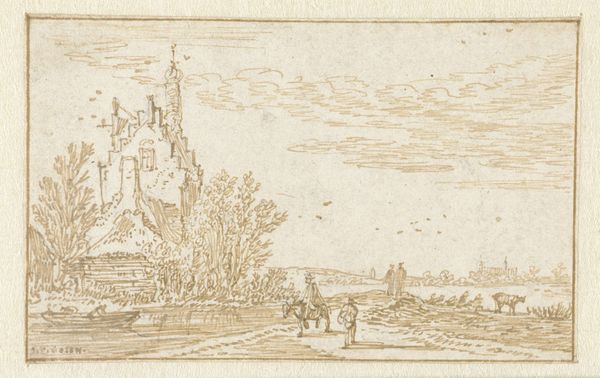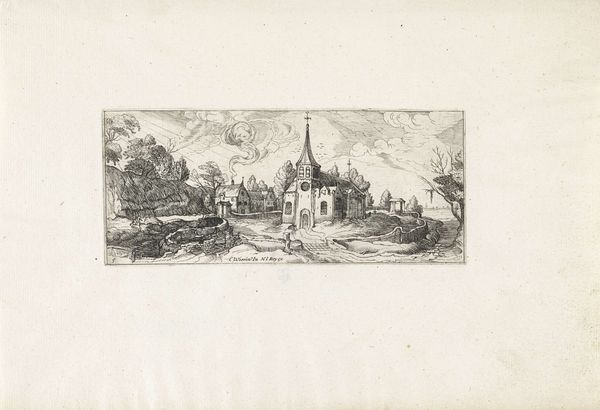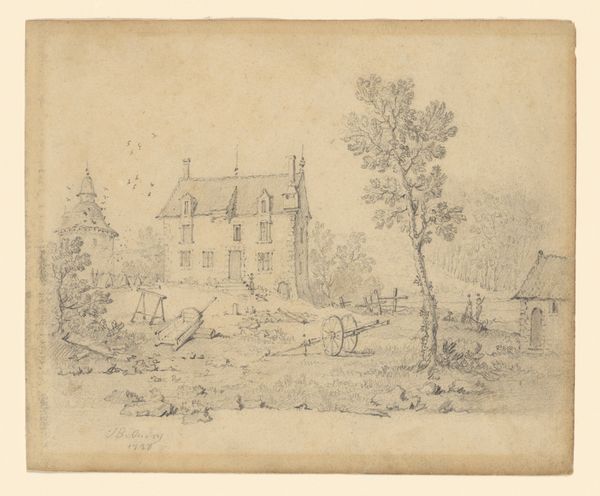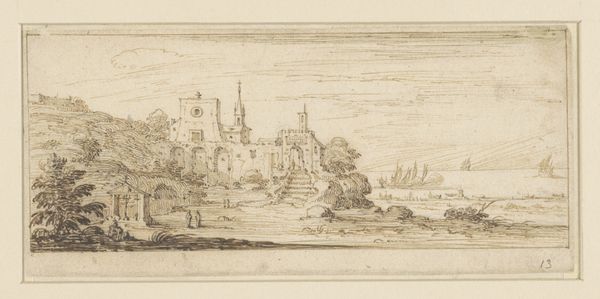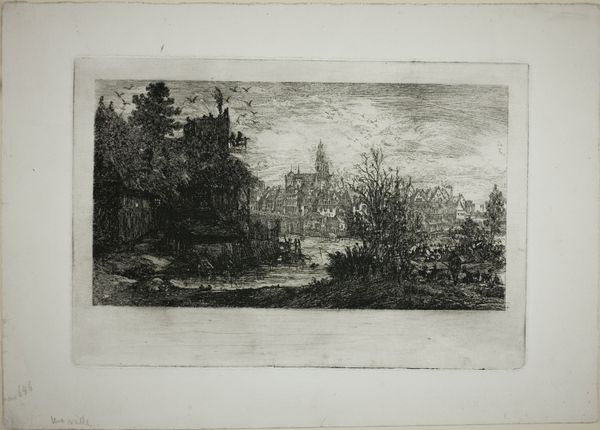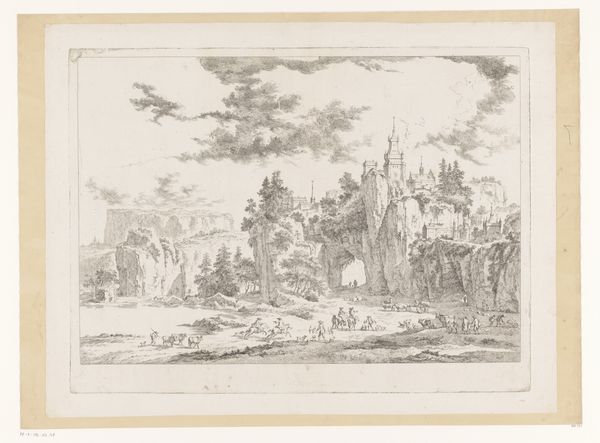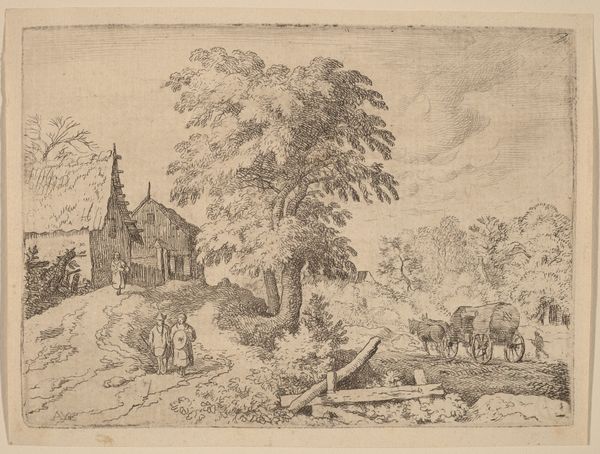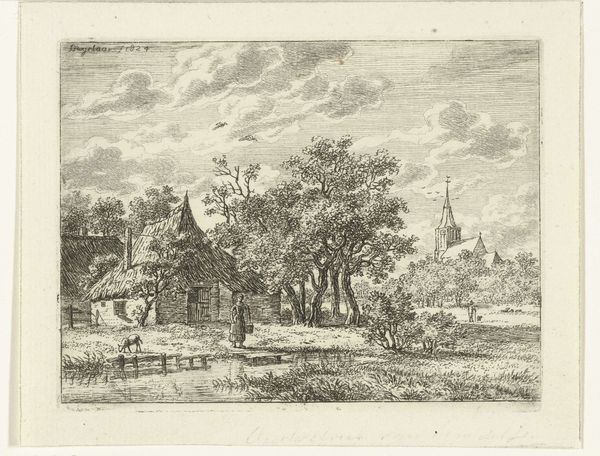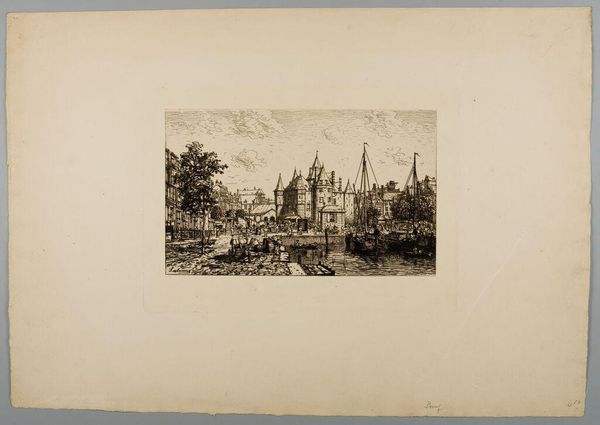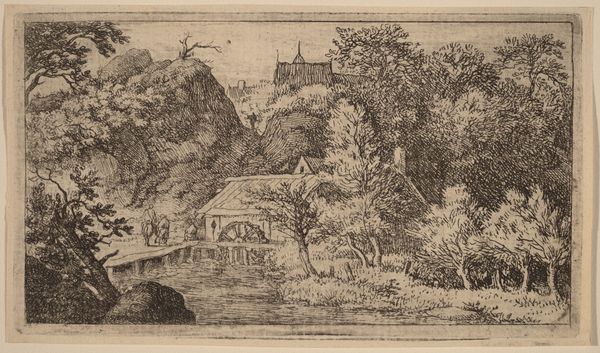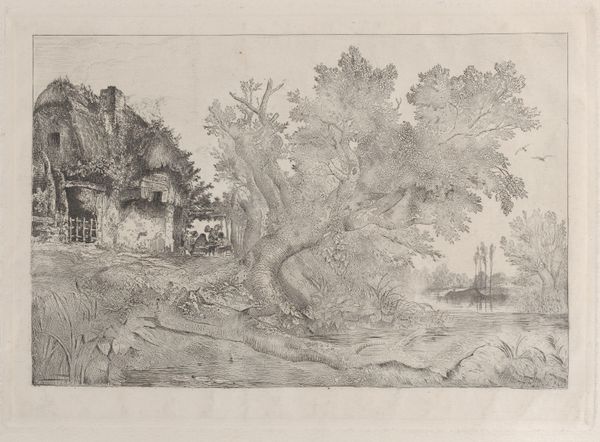
drawing, print, etching
#
drawing
# print
#
impressionism
#
etching
#
landscape
#
realism
Copyright: Public Domain: Artvee
Editor: James Ensor's "The Fair by the Mill," an etching from 1889, feels like a glimpse into another world. The scene is bustling, but the monochromatic palette and detailed lines lend a strange, almost unsettling quality. I’m curious, what stands out to you in this print? Curator: What I find striking is how Ensor utilizes the very process of etching to depict a social scene, almost as a form of social commentary. Think about the labor involved in creating this intricate work, the repetitive motions, the deliberate choices of line and tone. Editor: So, the process itself informs the reading of the work? Curator: Exactly! Consider the fair – traditionally a space for commerce and entertainment. But Ensor doesn't present it as purely celebratory. The figures seem somewhat grotesque, almost like automatons caught in a cycle of labor and consumption. The means of making, that meticulous and slightly mechanical etching, mirrors the mechanical and repetitive nature of the activities at the fair. How do the materials contribute? Editor: Well, it’s just etching. The etching process feels democratic because you can make copies. Curator: Good! It is about distribution. The social nature of an etching also speaks to the wide distribution and accessibility of prints compared to paintings, hinting at a critique of elitist art markets. Do you think he’s aiming for accessibility, or something else? Editor: Maybe he’s more interested in the tension? Bringing together what's seen as popular with a complex technique like etching? It definitely complicates things, it's not just a straightforward landscape or scene from everyday life. Curator: Indeed. By meticulously depicting a 'common' event using laborious and reproducible means, Ensor prompts us to consider the complexities embedded within both the spectacle and the modes of its production. Editor: I hadn't thought about the etching process mirroring the fair's activities. I’ll never look at prints the same way.
Comments
No comments
Be the first to comment and join the conversation on the ultimate creative platform.
